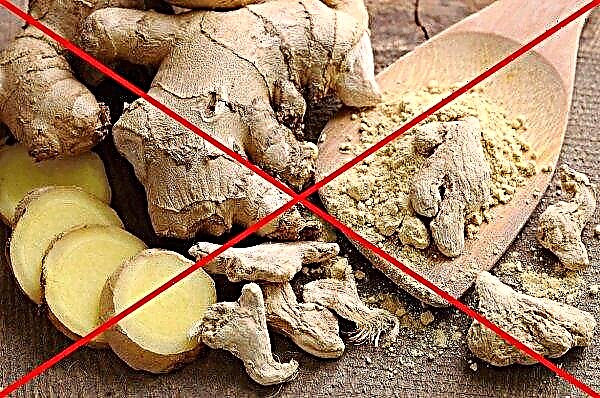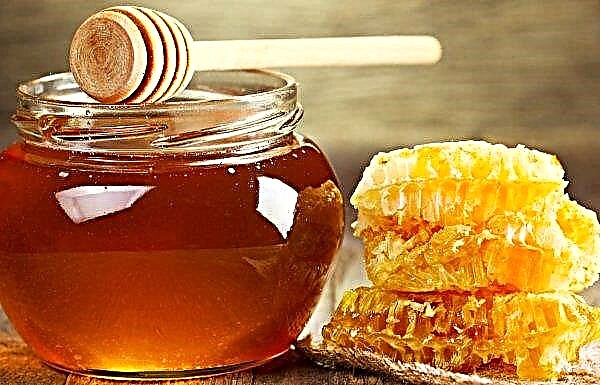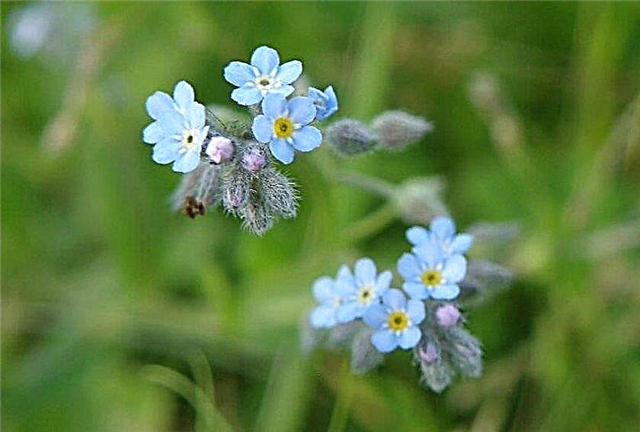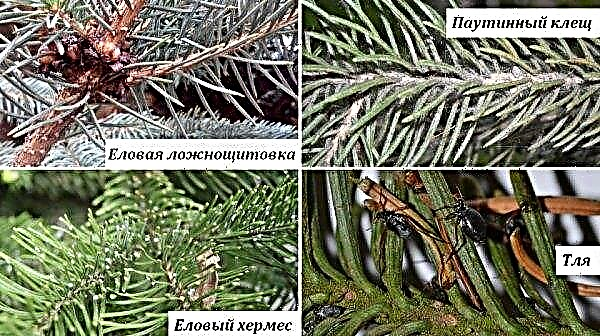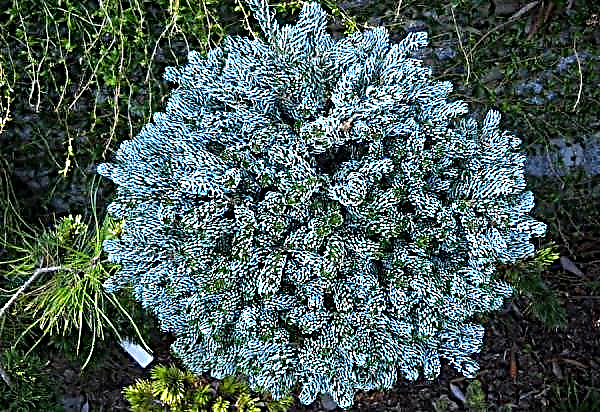Spathiphyllum Domino is an indoor plant, characterized by an exotic appearance and unpretentiousness in care. About the characteristic features of the variety and the rules of care, read below.
Botanical description of the plant
The Domino spathiphyllum hybrid was bred in South America, after which it received a wide distribution range in Asia and Europe. Spathiphyllum Domino belongs to the Aroid family. The root system is shortened, basal leaves grow directly from the soil.
Oval-shaped leaf plates with a point at the end, a vein is clearly drawn. Coloring varieties of green and white spots that are located randomly. White flowers bloom during the spring thaw.Did you know? The first spathiphyllum was described in 1870 by a botanist from Germany Wallis, who noticed an unusual flower during an expedition through the jungle of Colombia.
Conditions for growing in the house
In order for the culture to please its owners with beautiful flowering, it is necessary to create optimal growing conditions.

To do this, you must:
- choose the right location in the house;
- provide adequate lighting;
- observe the temperature regime;
- monitor air humidity.
Location and Lighting
The culture is most often located in the northern part of the house, but can also grow without problems on the windowsill on the south side. Spathiphyllum is a photophilous plant, therefore it is not recommended to grow it in shaded places, because a lack of light provokes dwarfism of leaf plates and makes the color less saturated. You can not expose the culture in places with a draft, otherwise it will die.
Important! When arranging the flowers on the south side, it is necessary to create shading so as not to harm the plant from direct sunlight.
Temperature mode
The optimum temperature for the growth and development of the plant is in the range from +16 to + 23 ° C. Too low temperatures cause growth arrest and culture death.
Air humidity
In order for the flower to maintain a beautiful appearance, it requires regular moisturizing, which is carried out using a spray gun. In hot weather, the plant must be irrigated in the morning and evening. During the cold season, spraying can be carried out every 3-4 days. To increase humidity, put a flower pot in a saucer of water.

Home Care
The growth and development of spathiphyllum will depend on the correctness of its care. It is very important to moisturize the soil and top dressing, without which the flower begins to dry out and stops flowering.
Watering
The frequency of watering a plant depends on the drying rate of the topsoil. Usually enough watering once every 3 days in a hot summer and once every 5 days in winter. Water should be left standing for a couple of days, temperature - + 20 ° С. The liquid is applied under the root, avoiding excessive contact with the stems and leaf plates.
Top dressing
In spring and summer, fertilizing is done every two weeks, in the fall once a month. For the winter period and during flowering, fertilizer is stopped. It is necessary to use fertilizers based on potassium and phosphorus, and the flower also loves organic fertilizing, which beneficially affects the external condition of the leaves.
Important! It is better to fertilize according to a pre-compiled schedule in order to avoid a supersaturation with nitrogen, which will lead to abundant growth of leaves, but will stop flowering.
Organic-based fertilizers are made from mullein or bird droppings, a solution is made of 100 g of raw material dissolved in 3 l of water. Mineral fertilizers can be purchased at the store and diluted according to the instructions. Use “Green House” top dressing in the amount of 1-2 caps diluted in 1 liter of water.
Fertilizer application rules:
- Dilute preparations only in boiled water.
- Before applying fertilizer, moisten the topsoil with a spray gun.
- Carefully make sure that the spray of the drug applied to the soil does not fall on the leaves and shoots.
- At the end of the procedure, moisten the soil again.

Pruning
Trimming spathiphyllum is a very important event that takes place after flowering. Peduncles that have already wilted after flowering are cut. The procedure is carried out using a knife, which make an even cut closer to the rhizome. The place of cut is covered with chopped wood ash. Pruning is also carried out as needed, if there are sluggish or dry leaves, they are removed manually.
Transfer
After buying a houseplant in a flower shop, a mandatory transplant is necessary. The reason is the change of soil in which the plant resides, because the store substrate often contains few nutrients.
Spatiphyllum transplantation should be carried out in such cases:
- the culture grew too large, and the dying of the lower part of the sheets began;
- annual procedure for transplanting young spathiphyllum into a large capacity;
- reproduction is required;
- infection by infections or pests.
Preparation of soil substrate:
- soddy soil - 2 kg;
- peat - 1 kg;
- sand - 1 kg;
- ceramic chips - 500 g;
- charcoal - 500 g.
The container in which the spathiphyllum is grown should be a bit cramped to create conditions for flowering, so the pot is chosen narrow and oblong. Transplantation is carried out once a year, in the spring.

Transplant Process:
- At the bottom of the prepared container, lay out the drainage system in the form of a pebble layer.
- The soil substrate is pre-disinfected by calcination.
- Soften the ground in a flower pot to a watery mixture.
- Rinse the roots gently in water, freeing from the ground. Inspect the root system for rotten or damaged roots, if any, they are cut, sprinkling the cut with wood ash.
- Pour soil substrate 1–2 cm onto a pebble layer in a pot.
- Introduce the flower into the container and gently fill it with a substrate, shaking the culture a little to fill all the voids with soil. After lightly tamp the top layer.
Important! Watering spathiphyllum after transplantation is not required. It is necessary to wait for the appearance of the first leaf plates, which will indicate the rooting of the flower.
How to propagate a flower
There are several ways to propagate the domino spathiphyllum:
- division of the bush;
- seed way.
Propagation by cuttings is carried out in the spring during the annual transplant. In an adult plant, cuttings form in the form of small leafy rosettes with a small rhizome.
The process of separation and further care of the cuttings is not time-consuming, it will require:
- Soak the soil in a pot and wash away the soil from the rhizome.
- Separate the stalk from the mother flower, carefully untangle the roots.
- Cuttings are introduced into the sand in order for the culture to gain strength and rhizome to grow.
- The planted cuttings are placed under the hood and daily ventilation is carried out for 10 minutes.
- If the stalk starts to produce new leaves, then the rooting has occurred, and after a month you can transplant it into the ground.

You can grow a new spathiphyllum in the seed way, but it is very long and troublesome. To obtain seeds, it is necessary to produce artificial pollination, which does not always give the desired result. The resulting seed material is sown in pots with a mixture of peat, sand and earth, mixed in a ratio of 1: 1. It is necessary to plant seeds on a surface of 2-3 mm so that the sprouts can hatch.
Within 2 weeks, sown seeds require careful care:
- it is necessary to cover containers with seedlings with glass, to direct an electric lamp on the pots, which should warm the ground and provoke rapid shoots;
- daily every 2-3 hours, the glass is removed for ventilation for 10 minutes;
- hydration is carried out every day in the morning using a spray bottle.
Did you know? One of the varieties of the plant is called Wallis spathiphyllum in honor of the discoverer of the culture.
Growing difficulties
There are several factors that provoke the appearance of diseases:
- Harmful insects.
- Lack or excess of fertilizing.
- Wrong place to grow.
- Non-compliance with the temperature regime.
Difficulties in growing and causes of their occurrence:
- growth and development retardation occurs due to excessive humidity and excessive lighting;
- lack of flowers, is due to the incorrectly selected container for transplant, which is more than required;
- the shrunken ends of the leaf plates mean the flower has little moisture;
- the leaves are covered with black spots - a lack of nitrogen fertilizer.

The most common diseases and pests of spathiphyllum:
- late blight;
- spotting;
- spider mite.
Methods of struggle:
- Avoiding waterlogging.
- The introduction of the drug "Fitosporin-M" 1.5 g per 1 liter of water.
Methods of combating late blight:
- Removal of affected areas of the flower.
- Processing with Fitosporin-M 1.5 g per 1 liter of water.
Spider mites are microscopic insects 0.2–0.5 mm in size. You can notice the tick activity on the flower by small cobwebs on the bottom of the leaf. The pest sucks the juice from the plant, because of which yellow spots appear, which dry out and form holes. When combating a tick, processing with a soap solution that is prepared from 20 g of liquid soap and 0.5 l of water will help.
Spathiphyllum Domino is an exotic home plant that is used as interior decoration. With proper care, the culture will annually delight its owners with beautiful flowers.

